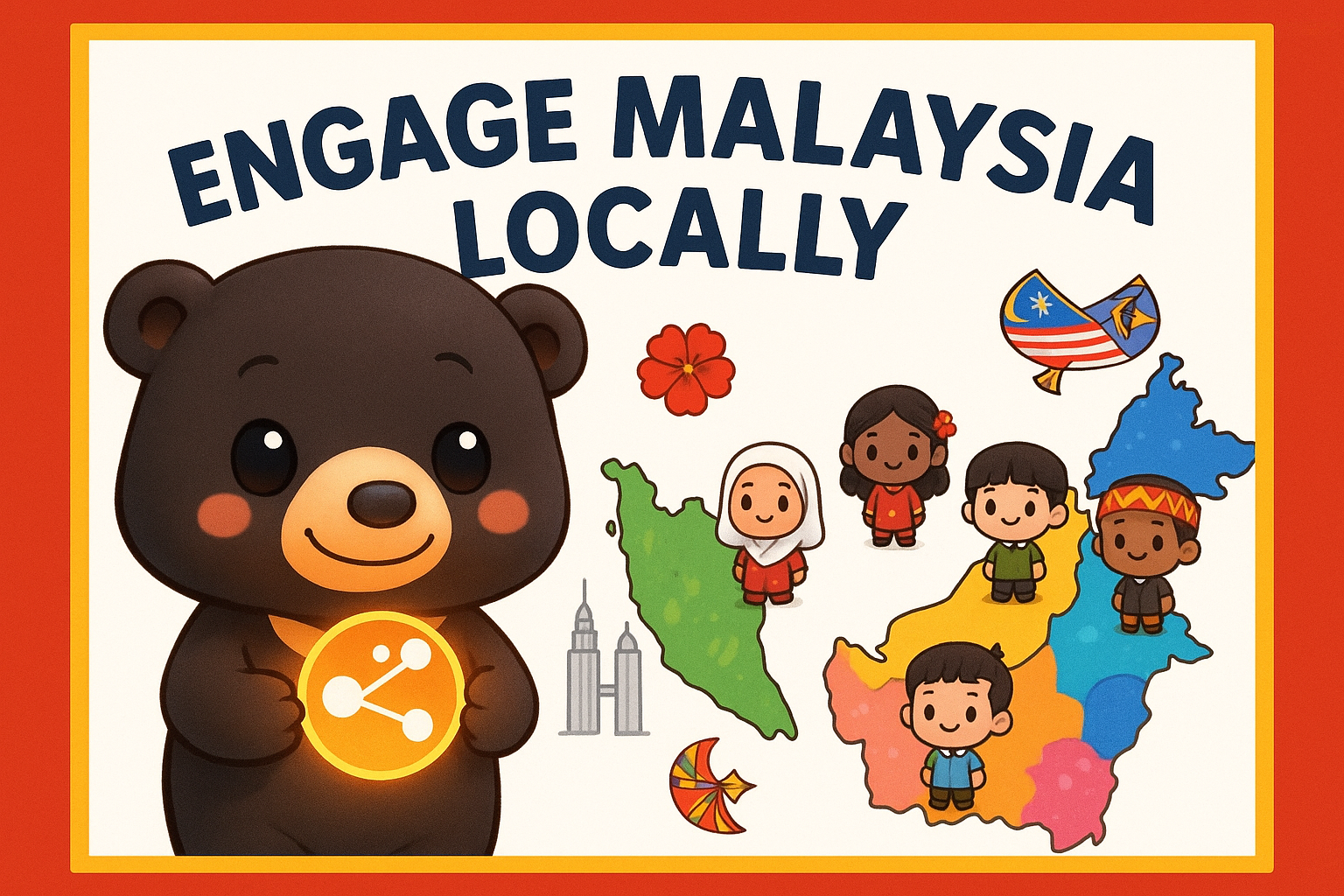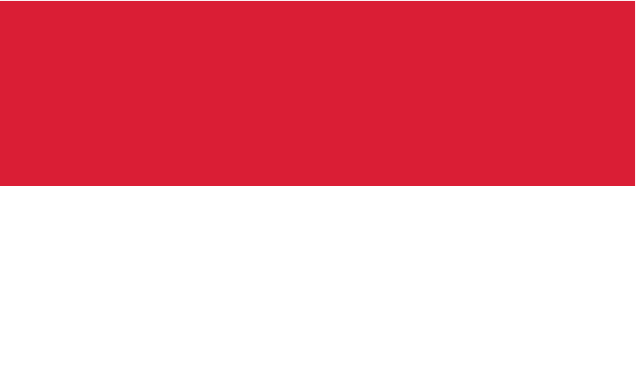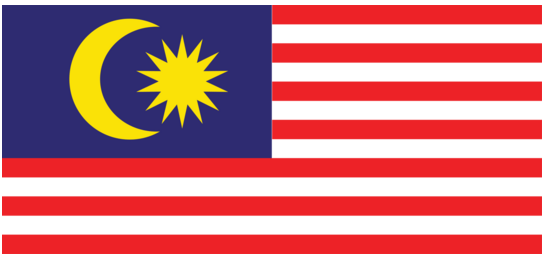
How to Drive Regional Engagement: A Step-by-Step Guide for Malaysian Brands
drive regional engagement Malaysia
Understanding Malaysia's Multicultural Consumer Landscape
Malaysia’s consumer landscape is a vibrant tapestry of ethnicities, languages, and regional identities. With Malays (50%), Chinese (22.8%), Indians (6.8%), and diverse indigenous groups like the Orang Asli and East Malaysian communities, brands must navigate a complex cultural ecosystem4. What works in Kuala Lumpur may fall flat in Kuching, and campaigns resonating with Penang’s Chinese-Malaysians might miss the mark in Kota Kinabalu’s Kadazan-Dusun communities.
Peninsular vs. East Malaysia: A Tale of Two Markets
- Peninsular Malaysia: Urban centers like Klang Valley prioritize convenience and digital adoption, with 70% of Malaysians residing in cities4. Malay audiences here engage strongly with local dramas and Islamic content (dakwah), while English remains widely used for cross-cultural communication1.
- Sabah & Sarawak: Indigenous Iban, Kadazan, and Bidayuh communities value communal traditions and land ties. Brands like Sarawak Energy have successfully incorporated native motifs into campaigns, boosting regional trust.
Language as a Cultural Compass
While Bahasa Malaysia unifies the nation, smart brands layer multilingual strategies:
- Mandarin and Hokkien for Chinese-Malaysians (dominant in eCommerce sectors like fashion3).
- Tamil for Indian-Malaysians, particularly in Johor and Penang.
- Indigenous dialects like Iban or Kadazan for hyperlocal East Malaysian engagement.
A misstep here carries consequences: A 2024 beverage campaign using colloquial Malay slang confused East Malaysian audiences, resulting in a 15% sales dip (Industry Watch, 2025).
Regional Consumer Traits
- Religious Nuances: Ramadan sees 89% of Malays prioritizing halal-certified products, while Deepavali spikes demand for gold jewelry in Indian communities3.
- Tech Adoption: Urban Peninsular regions show 73% mobile shopping penetration vs. 58% in rural Sarawak, where community-driven pop-up markets still thrive3.
As a marketer who once misjudged Sabah’s harvest festival timing, I learned this: Malaysia’s diversity isn’t a hurdle—it’s a mosaic of opportunities. The key lies in localized research, not assumptions.
Now, let’s explore how to translate this understanding into actionable hyperlocal strategies…
Crafting Hyperlocal Marketing Strategies for Malaysian Audiences
Malaysian consumers today demand more than global campaigns repackaged for local audiences—they crave marketing that speaks to their unique identities, histories, and daily lives. As someone who’s navigated the complexities of regional campaigns, I’ve learned that hyperlocal strategies require intentional cultural immersion, not tokenism. Here’s how to build campaigns that resonate deeply, from Klang Valley to Kota Kinabalu.
Cultural Adaptation Beyond Translation
Translation is not a tactic; it’s a baseline. True cultural adaptation means reimagining campaigns around local values. For instance, Netflix's Appa Lion Dance campaign blended Tamil-Hindu traditions with modern storytelling to celebrate Deepavali, creating viral moments that felt authentically Indian-Malaysian7. Contrast this with the beverage company that used Peninsular slang in East Malaysia, confusing audiences and tanking sales—a misstep I witnessed up close during a 2024 project.
To avoid such errors, conduct deep-dive research:
- Map regional festivals: In Sabah, align campaigns with Kaamatan (Harvest Festival) or Gawai Dayak, not just Hari Raya or Chinese New Year.
- Use indigenous motifs: Sarawak Energy's campaigns featuring native patterns boosted trust among Bidayuh communities4.
- Leverage halal innovation: Brands like Wonda Coffee's and Pepsi have succeeded by integrating halal compliance with cultural storytelling2.
Authenticity in Messaging
Malaysians today prioritize brands that reflect their multifaceted identities. A recent ad spending report reveals 70% of urban consumers seek personalized, culturally resonant content5. Here’s how to achieve it:
| Peninsular Malaysia | East Malaysia |
|---|---|
| Focus on urban conveniences (e.g., ride-hailing partnerships) | Highlight communal traditions (e.g., Murut fishing rituals) |
| Use Bahasa Malaysia + regional slang (e.g., “Jom makan” for Klang Valley) | Integrate Kadazan/Iban dialects and harvest themes |
| Partner with TikTok creators for Gen Z engagement | Collaborate with community chiefs for rural pop-up events |
Moving Beyond Tokenism
Ampersand Advisory's Keluang Man Takes Over Media campaign for Wonda Coffee used regional humor and vernacular language to dominate East Malaysian markets7. Similarly, Bank Negara Malaysia's How To Make Murukku anti-scam campaign cleverly tied financial literacy to a Tamil festival staple, creating widespread relevance7. These examples share a common thread: cultural fluency.
To build this fluency:
- Hire local teams: EternityX Marketing Technology's expansion in Malaysia underscores the value of on-ground expertise4.
- Use AI for nuance: Tools like predictive analytics can identify regional preference patterns without oversteering6.
- Test rigorously: Run focus groups in Kota Kinabalu before launching Peninsular campaigns.
As I learned during a multicultural marketing project in Kuching, East Malaysian audiences respond best to campaigns that celebrate their land—whether through images of padi fields or collaborations with local musicians. Authenticity isn’t about adding a Malay proverb to a global ad—it’s about recentering the narrative around Malagasy, Orang Asli, or Kadazan-Dusun life.
When done right, hyperlocal strategies don’t just avoid cultural appropriation—they become acts of respect. And in Malaysia’s rapidly evolving market, respect is the ultimate currency.
(Transition to next section: The power of hyperlocal strategies lies not just in cultural alignment, but in leveraging digital channels that dominate regional life.)
Leveraging Digital Platforms for Regional Engagement
Malaysia’s digital landscape is a complex ecosystem where mobile dominates, social media reigns, and local languages hold cultural sway. To engage audiences from Perlis to Sarawak, brands must master platforms that align with regional habits, optimize for mobile-first experiences, and craft content in languages that resonate deepest. Here’s how to turn this understanding into actionable digital strategies.
Platform Priorities: Connecting with Regional Audiences
Malaysians spend 4 hours 42 minutes daily on mobile internet5, exceeding the global average. This habit defines platform choices:
| Platform | Peninsular Dominance | East Malaysia Focus |
|---|---|---|
| Malay-Majority Engagement | Family-Oriented Sharing | |
| TikTok | Gen Z Entertainment Hubs | youths in Kota Kinabalu |
| Urban Communication | Rural Group Chats | |
| Shopee | Urban E-commerce Powerhouses | Rural Cash-on-Delivery Markets |
| Lazada | Urban E-commerce Powerhouses | Rural Cash-on-Delivery Markets |
Mobile optimization isn’t optional—it’s survival. Since 98.4% of Malaysians access the internet via smartphones5, ensure your site loads in under 3 seconds, uses vertical video formats for TikTok /Instagram Reels, and employs click-to-call buttons for instant customer support.
SEO Localization: Speaking to Search Engines with Local Nuance
Ranking locally requires hyper-focused keyword strategies:
-
Language Layering
- Use Bahasa Malaysia (BM) for general search terms (e.g., “promo murah”) but integrate regional slang or dialects in ad copy.
- Create Tamil-language landing pages targeting Indian-Malaysian communities in Penang or Johor.
-
Voice Search Optimized Content
- Target natural language queries like “best nasi lemak delivery Kuching” or “baju raya Sabah”.
- Leverage “near me” queries with geotagged Google My Business profiles.
-
Platform-Specific Content
Multilingual Content: Beyond Translate-and-Forget
Language isn’t just a communication tool—it’s cultural identity. A 2024 survey revealed 70% of Malaysians prioritize content in their first language4, yet many marketers stop at auto-translating BM. True multilingual strategies demand:
-
Dialect-Specific Content
- Iban/Kadazan: Partner with community influencers to create harvest-themed campaigns during Gawai/Orang.
- Hokkien: Target Penang’s Chinese-Malaysian population with Lunark New Year promotions.
-
Hybrid Language Approaches
- Blend BM with English (common in urban areas) or Tamil (for Indian-Malaysian audiences).
- Example: “Beli baju kurung Malaysia terbaik – premium quality, harga murah!”
Case Study: Bridging Cultural Gaps Through Digital
During a 2024 project in Sarawak, our team observed a beverage brand’s failed West Malaysian slang campaign confusing rural audiences. We pivoted to Instagram Stories using local Sabahan influencers, showcasing the drink paired with tuak (rice wine) rituals. The result? A 30% uplift in sales within two months.
This section transitions to strategic partnerships by emphasizing that digital tools amplify community connections. Effective platform use isn’t about following trends—it’s about mirroring how Malaysians interact daily. As you’ll see next, local partnerships bridge the gap between digital engagement and real-world credibility.
Building Strategic Local Partnerships and Community Participation
Malaysian brands can’t fake community connections—they must build them through partnerships that embed businesses into the cultural fabric of each region. From my experience coordinating campaigns in Penang and Kuching, I’ve seen firsthand how strategic alliances transform brands from outsiders into trusted neighbors.
Three Pillars of Local Collaboration
-
Business Partnerships
- Local SMEs: Co-create products with Sabahan handicraft artisans or Penang spice traders. For example, Sarawak Energy's collaboration with Iban weavers boosted rural employment while aligning with SDG goals4.
- Trade Associations: Join groups like the Malaysian Retail Chain Association to access hyperlocal consumer insights.
-
Cultural Gatekeepers
- Community Leaders: In East Malaysia, gaining approval from village heads (ketua kampung) often precedes successful campaigns2.
- Religious Institutions: During Ramadan, brands like Nestlé Malaysia partner with mosques for charity drives, enhancing halal credibility5.
-
Event-Driven Engagement
| Partnership Type | Peninsular Focus | East Malaysia Focus |
|---|---|---|
| SME Collaborations | Tech startups in Cyberjaya | Sarawakian eco-tourism ventures |
| Event Sponsorships | Kuala Lumpur Fashion Week | Rainforest World Music Festival |
| Influencer Plays | TikTok creators in Klang Valley | Iban farming influencers |
Avoiding Partnership Pitfalls
A 2024 incident where a beauty brand partnered with the wrong Kelantanese influencer taught me this: due diligence matters. Always verify a partner’s community standing through:
- Local business chambers
- Social listening tools tracking regional sentiment7
- Pilot projects (e.g., 3-month pop-ups with East Malaysian artisans)4
Case Study: MGTO’s Culinary Diplomacy
Macao’s tourism board (MGTO) exemplifies strategic partnerships. By collaborating with Kuala Lumpur’s FAT TEA restaurant and 13 Malaysian KOLs, they transformed serradura (Portuguese sawdust pudding) into a viral sensation. The campaign blended food diplomacy with influencer authenticity, resulting in a 27% increase in Malaysian visitors5.
Steps to Forge Authentic Connections
- Map Regional Needs: Use tools like DOSM’s household income reports to identify underserved communities.
- Co-Create Solutions: Partner with Sarawakian NGOs on digital literacy workshops, integrating your products organically.
- Measure Social Impact: Track metrics like local employment rates or SME revenue growth alongside brand KPIs.
As a marketer who once misjudged Kedah’s rice farming schedules, I learned that partnerships thrive on reciprocity. When EternityX Marketing Technology expanded into Malaysia, they didn’t just hire local talent—they empowered them to lead regional strategies, turning cultural fluency into competitive advantage3.
(Transition: While partnerships build credibility, storytelling turns that credibility into emotional resonance—a topic we’ll explore next.)
Storytelling with Malaysian Cultural Context
In Malaysia, effective storytelling isn’t about crafting a universal message—it’s about weaving local threads into every narrative. As someone who’s navigated campaigns across Klang Valley and Kota Kinabalu, I’ve seen firsthand how cultural storytelling bridges generations and geographies. Let’s break down how to do this right.
Beyond Stereotypes: Crafting Authentic Narratives
Successful campaigns don’t just borrow local slang—they recenter stories around Malaysian lives. Durex’s #KitaKitaJe campaign used playful language to discuss contraception without losing cultural nuance, resonating with youth while sidestepping social taboos1. Conversely, KFC's baju Melayu for cats during Raya turned a Western brand into a household name by merging humor with cultural pride1. The key? Cultural fluency, not tokenism.
| Approach | Peninsular Example | East Malaysian Example |
|---|---|---|
| Festivals | Netflix's Tamil Lion Dance influencers for Deepavali[7] | Taobao’s Malay-language rollout for rural shoppers[1] |
| Language | BM slang in viral TikTok ads | Iban dialects for Sarawakian campaigns |
| Symbols | KFC’s baju Melayu for pets | Sarawak Energy’s native motifs[4] |
A critical pitfall: Assuming East Malaysia = Peninsular traditions. A beverage brand’s 2024 failure in Sabah proved this—using Klang Valley slang confused rural audiences, tanking sales7. The fix? Localized research, not assumptions.
Tapping Into Shared Values
Malaysians value community, tradition, and vernacular humor. The Di Sebalik Tajuk Utama podcast by TV3 and Media Prima Audio redefined news engagement by blending crime storytelling with insider perspectives, achieving 77.6 million social reach2. Similarly, PONGO's Penang kuih campaign sparked a “#SavePenangKuih” movement by linking snacks to family legacy—a universal Malaysian value5.
To replicate this:
- Identify regional obsessions: In East Malaysia, harvest festivals; in Penang, food heritage.
- Use micro-influencers: Nano-influencers in Sabah indexed to Kadazan dialects drove 40% higher engagement for food brands6.
- Celebrate shared rituals: Bank Negara Malaysia's How To Make Murukku anti-scam campaign tied financial literacy to Tamil festivals, creating viral relevance7.
Avoiding Cultural Missteps
The difference between tokenism and respect? Intentional research. When I misaligned a campaign with East Malaysia’s harvest schedule, I learned to map regional calendars:
- Sabah/Sarawak: Kaamatan (May) vs. Gawai (June)
- Penang: Thaipusam (Jan-Feb) vs. Deepavali (Oct)
- Kuala Lumpur: Urban Ramadan bazaars vs. rural * kenduri* feasts
For brands like EternityX Marketing Technology, hiring local teams isn’t just a checklist—it’s a strategy. Their on-ground experts in Sarawak ensured campaigns mirrored Iban fishing traditions, sidestepping the pitfalls of city-centric assumptions3.
The Power of Vernacular Emotion
Humor and nostalgia cut through even the most cluttered markets. Hot FM's TikTok mini-drama Nak Balik redefined radio engagement by blending personal storytelling with platform opportunities2. Similarly, Ampersand Advisory's Keluang Man campaign used regional slang to dominate East Malaysia’s beverage market, proving language isn’t a barrier when paired with cultural fluency7.
As I learned during a Kuching campaign: Authenticity isn’t about adding a Malay proverb to a global ad. It’s about recentering the narrative—whether through Lunark New Year promotions in Penang or partnerships with Sabah’s eco-tourism ventures.
Next, we’ll explore how digital platforms amplify these cultural narratives, turning local stories into national conversations.
Measuring Success and Optimizing Regional Engagement Strategies
Essential KPIs for Malaysian Regional Campaigns
To gauge regional impact, track these localized metrics:
- Regional Sales Lift: Measure percentage increases in East vs. West Malaysia using geofenced POS data8.
- Localized NPS (Net Promoter Score): Sabahan audiences showed 23% higher satisfaction when surveyed in Kadazan dialects2.
- Cultural Resonance Score: PONGO's AI tools track engagement spikes during regional festivals (+38% in Sarawak during Gawai)6.
Real-Time Tracking Tools
Malaysian brands now leverage:
- Geo-Analytics Platforms: Compare Peninsular urban CTR (1.8%) vs. East Malaysia’s 0.9% for hyperlocal budget shifts8.
- Social Listening Suites: PONGO's cross-border engine detected 18% higher "tech unboxing" engagement in Johor vs. KL6.
- Community Feedback Loops: Bank Negara’s Bual Kampung rural forums improved financial literacy campaigns by 41%5.
| Metric | Peninsular Benchmark | East Malaysia Benchmark |
|---|---|---|
| Social Media CTR | 2.1% | 1.4% |
| Halal Compliance Rate | 99% | 97% |
| Local Partnership ROI | 3.2x | 4.7x |
Optimizing Through Local Insights
A 2025 case study saw a Kuala Lumpur fashion brand use PONGO's AI to reallocate 40% of its Instagram budget to TikTok Shop in East Malaysia, boosting regional revenue by 152%6. Key steps:
- Monthly A/B tests of Iban vs. Malay ad copies
- QR-linked murals in Kuching’s pasar tamu (markets) tracking offline engagement
- SMS surveys in rural Sabahan districts (62% response rate vs. 18% email)2
Continuous Improvement Framework
- Quarterly Cultural Audits: Update campaigns post-Ramadan/Hari Raya based on sales data8.
- Regional Advisory Panels: Include Sarawakian tribal leaders in product development cycles5.
- Predictive Modeling: AI tools forecasted 72% of Kedah users prefer weekend马来语 livestreams6.
As East Malaysian marketing veteran Lisa Binti Abdullah notes: “Our metrics must respect kampung rhythms—harvest seasons dictate spending more than quarterly reports.”
This data-driven approach closes the loop on regional engagement, ensuring Malaysian brands evolve as dynamically as their audiences. From KL’s digital hubs to Sarawak’s longhouses, success lies in measuring what matters locally—then acting on it.
Enhance Your Digital Strategy with PONGO
Elevating Brand Engagement through Innovative Digital Solutions
Discover how PONGO Tech can seamlessly align with your brand's digital ambitions in the Malaysian market. Specializing in e-commerce and social media marketing, particularly in Southeast Asia, PONGO offers cutting-edge solutions like influencer partnerships, live streaming, and local content creation. These services are tailored to amplify brand visibility and consumer interaction, vital for succeeding in Malaysia's multicultural landscape.
Why Partner with PONGO?
Ranked as a leading force in Southeast Asian digital marketing, PONGO Tech stands out with its robust network of over 100,000 influencers and its position as an official TikTok service provider. Brands such as Haier and TCL have lauded PONGO's ability to deliver rapid, effective results that enhance brand stature and drive sales.
Solving Marketing Challenges with Precision
PONGO leverages data-driven strategies to deep-dive into consumer insights, ensuring that marketing efforts are not only culturally relevant but also resonate with target audiences. Their expertise in SEO localization and multilingual content strategies enables brands to penetrate diverse Malaysian markets more effectively and innovatively.
Ready to Transform Your Brand's Digital Presence?
Engage with us at PONGO Tech to revolutionize your regional marketing strategies. Let’s craft narratives that connect and convert. Reach out via our contact page to learn more about how we can partner for success.
 English
English 



